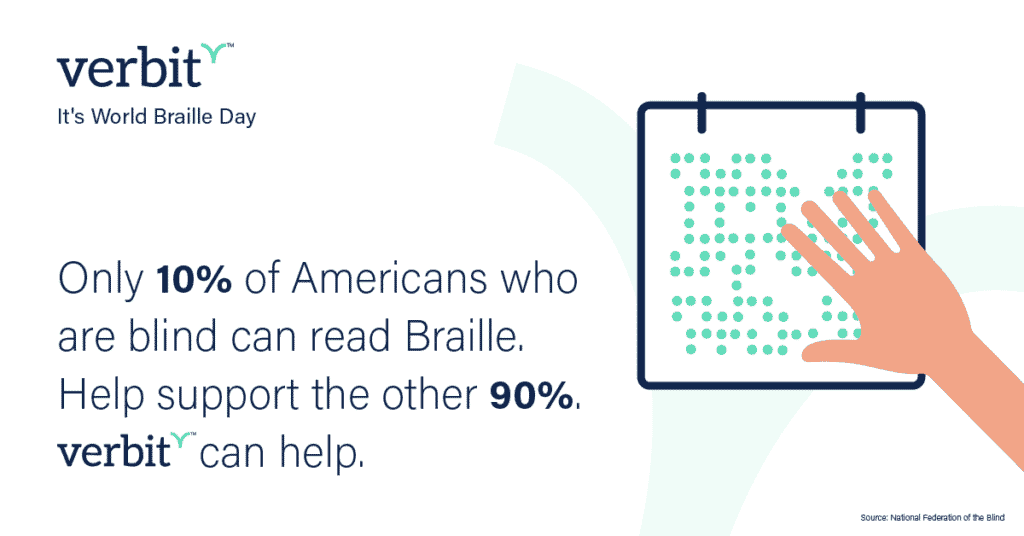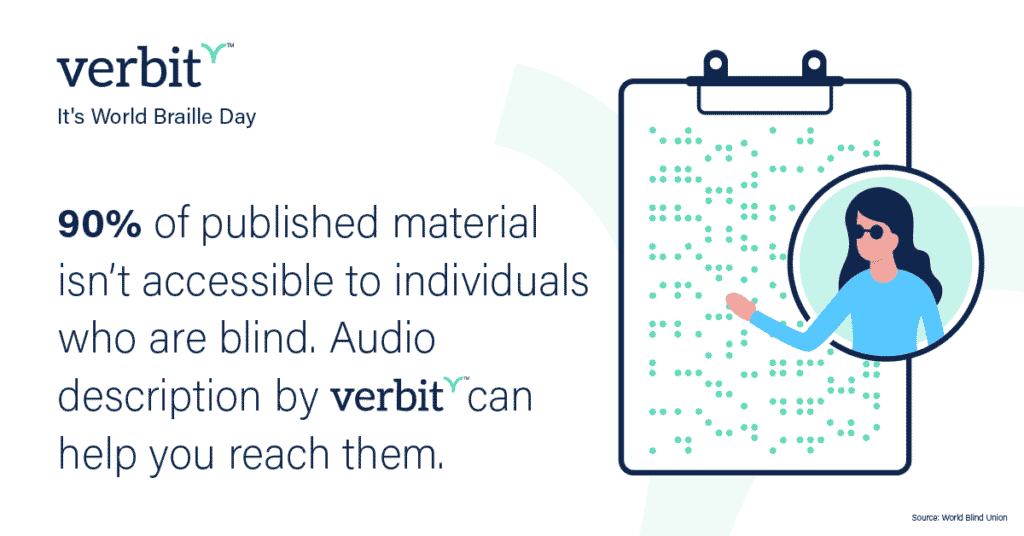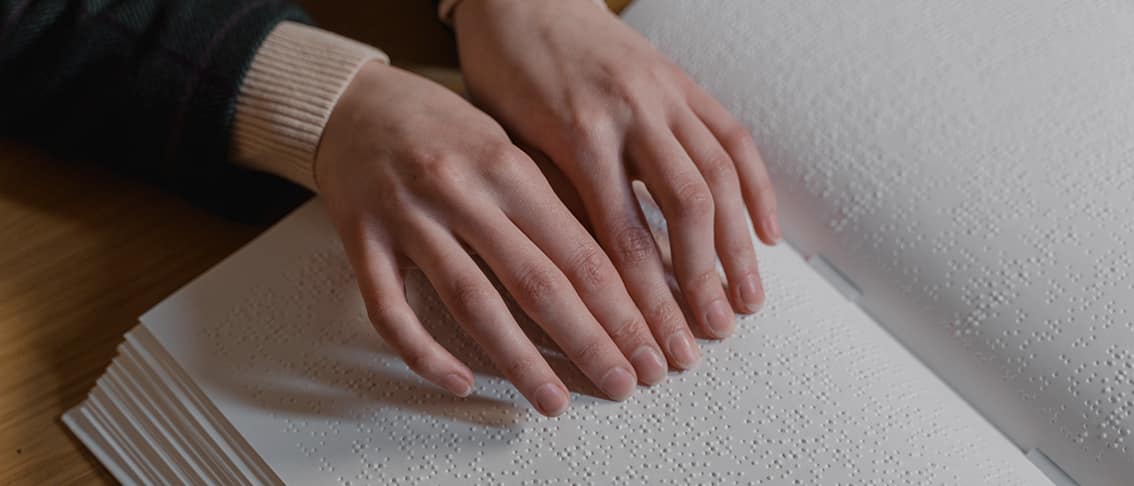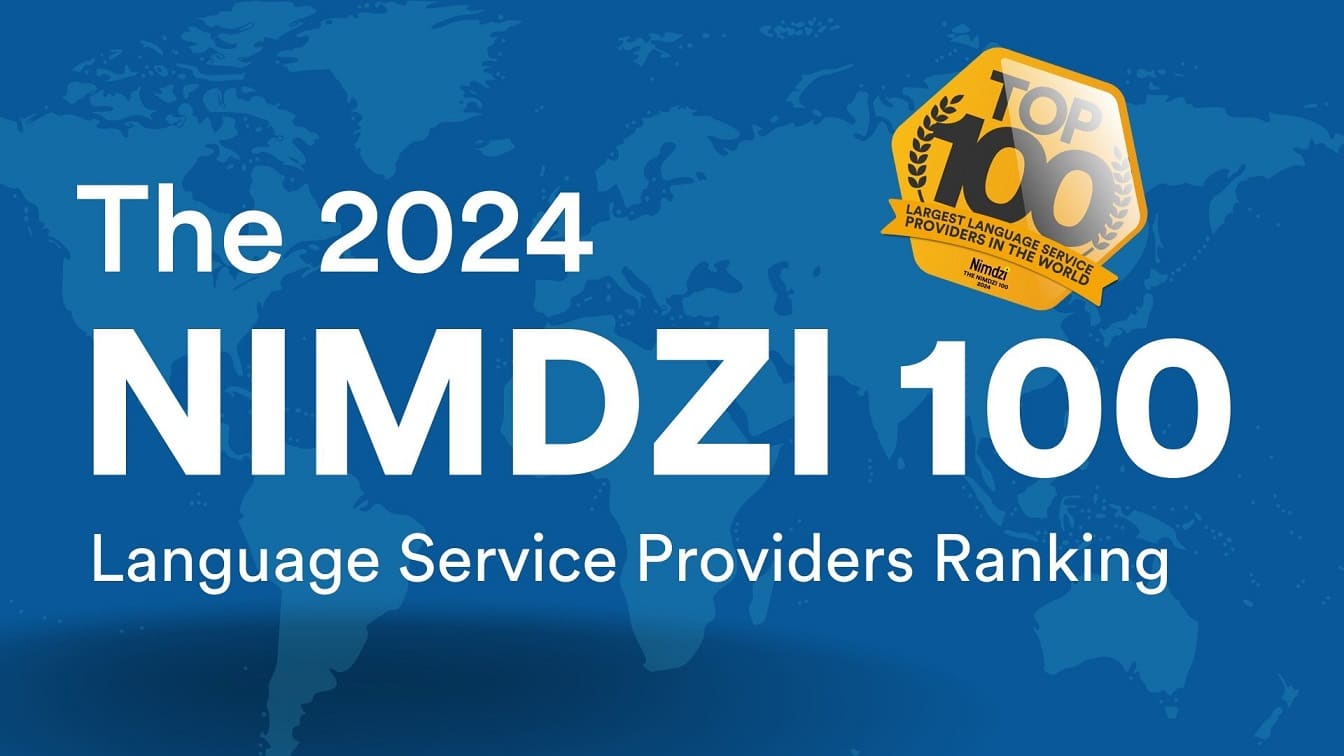With approximately 43 million of the world’s population living with blindness, individuals who are blind play a large part in our global community.
This World Braille Day, Verbit’s leaders are encouraging businesses, schools and the public to consider and recognize the challenges that individuals who are blind or have low vision may be facing on a daily basis. While the Braille system has empowered millions of individuals who are blind with the ability to communicate, work and learn more effectively, there is more that can be done to offer greater inclusion and equity to these individuals.
“Systems like Braille have really enabled individuals who are blind to better succeed, but there are still barriers that we need to address. There are so many ways that people, businesses and institutions can continue to show up for people who are blind through further education and action,” said Scott Ready, Director of Customer Success & Accessibility Evangelist at Verbit.
World Braille Day commemorates the birthday of Louis Braille, who first developed the system which allows individuals to read and write through touch. Though Braille has empowered individuals who are blind to be able to read, many still struggle to find accessible versions of books and other types of media.

Challenges Facing the Blind Community
Being able to access information in accessible formats like Braille has been essential for individuals who are blind. However, more than 90% of all published material isn’t currently accessible and many individuals who are blind don’t know how to read Braille. Literacy remains a significant challenge in the blind community and only 10% of Americans who are blind can read braille.
Helpful Ways To Include Individuals Who Are Blind
In the US alone, approximately 12 million people have vision impairments. Whether you’re an individual running a small business or a professional charged with managing a department within a corporation, you’re likely to work with someone or encounter a customer who is blind or has low vision.
Here are some formats and tips you can incorporate to offer greater access to them.
- Provide Large Text Formats: Large print is beneficial for individuals who have low vision and struggle to read small text. Whether you’re handing out flyers, menus or even publishing text on your website, be sure to format it with a large font. Fonts sizes that are at least 18-20 pts are considered best practice.
- Include Audio Descriptions for Video: When sharing video with others, offer audio descriptions. Descriptions help make the visual elements of a video accessible to those who are blind and have low vision. Providers like Verbit offer audio description tools that can be used for events, marketing videos and employee training videos, making audio description highly useful for business leaders who frequently produce and share video content.
- Practice Visual Etiquette: When speaking to a person who is blind, make sure to practice visual etiquette. Be precise when explaining anything visual, including details like colors, texture and shape, and clearly identify yourself when meeting a person who is blind, especially when first walking into a room.
- Offer Transcripts for Audio: To make audio accessible, be sure to provide a transcript for all audio and video clips on your website. Braille users can read transcripts by using refreshable Braille devices that translate webpage text into braille, or by hearing the text with a screen reader. Some individuals who are blind even prefer using a screen reader rather than hearing audio, as screen readers read the information much faster than a person would be able to.

Advocating for Greater Inclusion
While incorporating these tips is a great starting point, individuals and professionals who seek to reach and engage with individuals who are blind will benefit from incorporating policies and technologies that drive long-term change.
“The tools needed to support individuals who are blind and have disabilities are already available. It’s up to leaders to start advocating and applying these everywhere to better meet the needs of not just those who are blind, but all people with disabilities,” said Ready.
Verbit is committed to designing technology that helps businesses and organizations better include and support individuals with disabilities, including those who are blind and low vision. Reach out to learn more about our accessible audio description and transcription tools.




